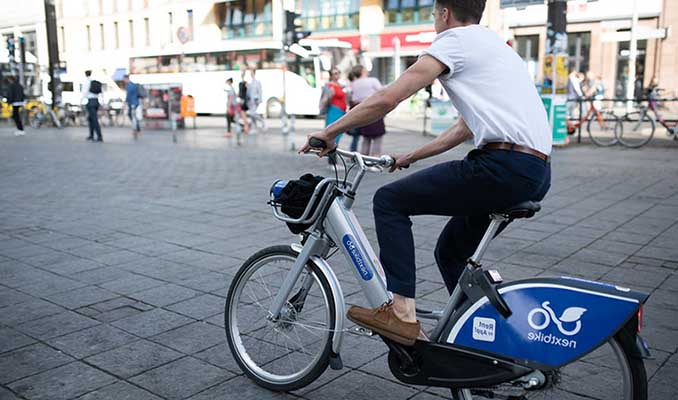One of the biggest benefits of electric bicycles is that they can help riders go farther with the same amount of leg strength. But with manufacturers quoting vastly different ranges and maximum distance ratings for seemingly similar e-bikes, how do you know what the true distance an e-bike can reach is? It’s actually easier than you think. And after spending more than a decade dealing with energy, I’ve gotten pretty good, if I may say so myself.
Related:
Contents
What does the autonomy of an e-bike depend on?
First things first: One of the reasons e-bike range ratings seem to come in everywhere is that they can be influenced by a number of factors. First, they depend on speed to rider weight, terrain style to wind conditions and even tire choice can impact how effective an e-bike will range on a single charge.
The second major factor is the presence (or absence) of a hand throttle. Most European cyclists will not have to take this into account as e-bike throttles are not common in EU countries. But for Americans and cyclists from other countries that allow hand throttle in addition to pedal assist, hand throttle can be a quick way to drain the battery and reduce range.
How far can I go on a single charge?
We hear this question very often! And honestly, it’s one of the most important factors in deciding which e-bike to buy. Finding the exact range of an e-bike is tricky and difficult to reduce to a single number. It can be difficult to compare bike models, but you can absolutely expect a lonelier, farther riding range from a battery with higher volts and amps.
It is important to keep in mind that the driving range of all e-bikes depends on many factors, including:
- Total payload, pilot + gear
- Average speed
- Tire pressure
- Steepness of the
- External temperature
- How much you pedal
- Tire type
- Battery Type
- Battery age
So how far can I go? The range you can go to is basically boiled down to this: how much power you have on board versus how much power you need to travel a mile. It’s all great. But how far can I go? To answer this question correctly, you can either conduct a real-world test or read on.
How to estimate the range of e-bikes
To determine the approximate range of an e-bike, you must first start with the battery capacity. It is usually measured in Watt Hours (Wh). Sometimes you’ll see a battery rated in volts and amp hours, such as an e-bike with a 48V 10Ah battery. To convert to Wh, simply multiply volts by amp hours. A 48V and 10Ah battery is therefore a 480Wh battery.
Next, you can calculate the actual range by simply dividing the battery’s watt-hour capacity by an average efficiency number in Wh/mi (or Wh/km if you prefer kilometers). This is the slightly confusing part of the math, as the efficiency numbers vary based on the factors listed at the beginning of this article.
But generally speaking, most 500-750W throttled e-bikes ridden at an average speed of 30km/h on slightly hilly terrain bring in around 15.6Wh/km. So such an e-bike with a 480Wh battery would give me a range of around 30km. Assisted pedaling will always be more efficient. I find that most pedal-assist e-bikes are ridden at 21 to 27km/h and average pedal-assist levels will get me around 9.4Wh/km. So the same 480Wh battery on a pedal-assist e-bike will give me around 45km of range.
You can use the same math for various battery sizes to calculate an estimated runtime under real-world conditions. However, you may want to adjust these numbers based on the terrain. I usually only ride on slightly hilly terrain. If you’re riding on the flat, you can use slightly better efficiency numbers. If you’re climbing bigger hills, you’ll want to use slightly worse efficiency numbers.
Factors affecting range with an e-bike
There are several characteristics of electric bikes that affect the number of kilometers you get per charge. Like the miles per gallon in a car, the range is there for a reason: there’s no guaranteed number of miles or the number of hours you can drive per charge. These are some aspects that will affect the range of your bike:
Battery Size: A larger battery gives you more power and takes you further with each charge.
Battery Age: As batteries age, they won’t hold a charge like they did when they were brand new. With this in mind, you may want to replace the battery in your electric bike if you find that it no longer gets good mileage.
Pedaling Capacity: Different classes of electric bikes have different pedaling capacities. If you have a model where you can pedal, such as a pedal-assist bike, you can combine your power with that from the battery to save energy while you’re out. If you rely solely on battery power, it may deplete faster.
These are some other traits of your bike that can affect range. As with a car, there’s no specific answer as to how many miles or how much time you can drive on one charge.
While you’re out, it’s important to keep track of your time or mileage so you don’t run out of energy at the wrong time.


